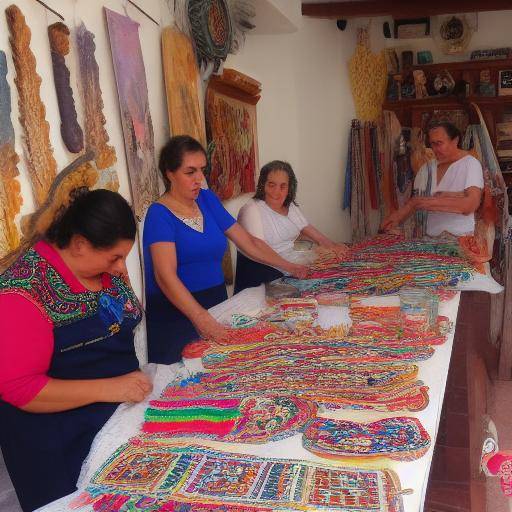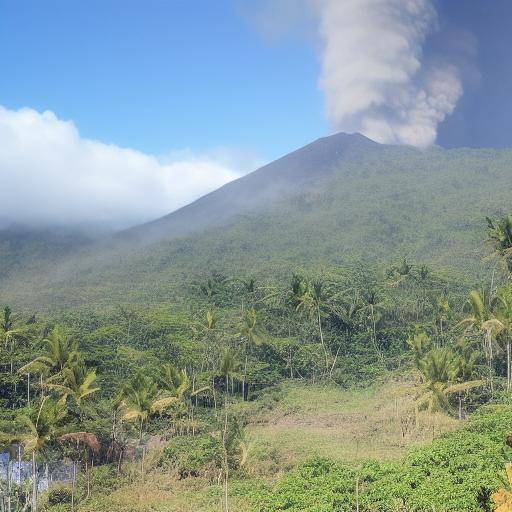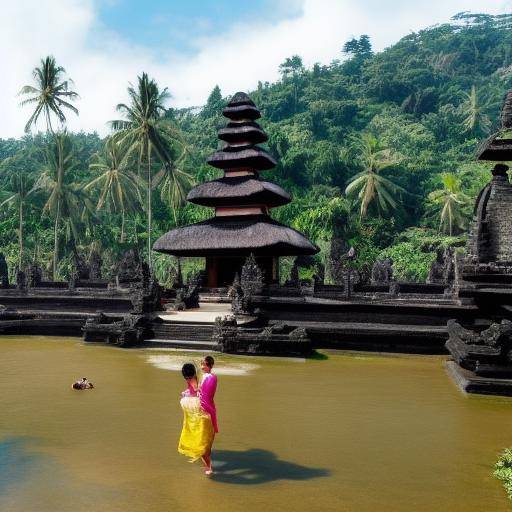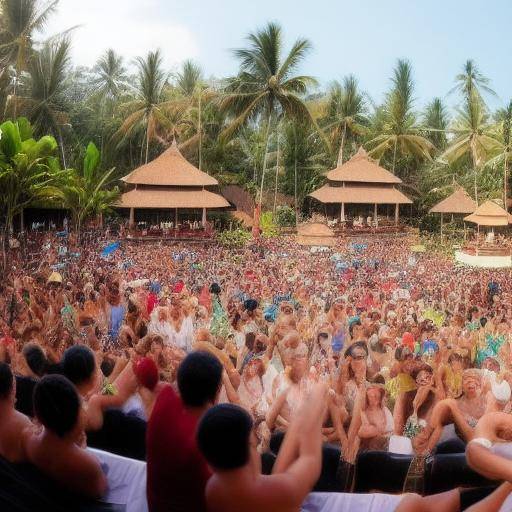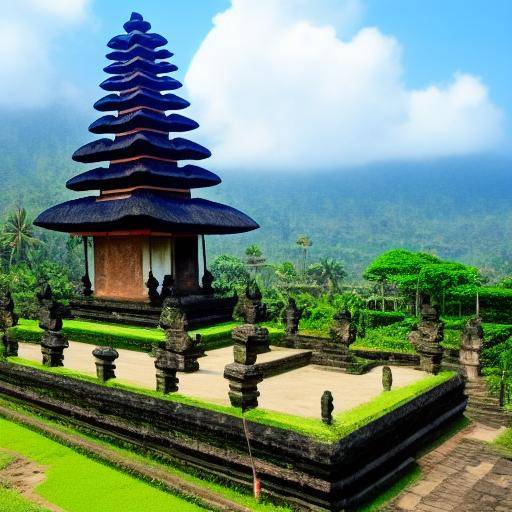
At the heart of the mystical island of Bali there is a place that emanates spirituality, majesty and tradition: the Temples of Besakih. This sacred site, located at the heights of Mount Agung, represents the spiritual epicentre of Balkan Hinduism. Join us on a journey that will plunge us into cultural wealth, millennial history and the spiritual depth of this iconic place.
Introduction
The Besakih Temples, known locally as Pura Besakih, constitute the largest and most sacred temple complex in Bali. This religious enclave is located on the slope of the Agung sacred volcano and consists of 23 temples that extend along various levels, each dedicated to a specific deity. This article will guide you through the fascinating history, spiritual importance and intricate architecture of the Besakih Temples. In addition, we will explore the relationship of the temple with culture and Hinduism in Bali, revealing its impact on the lives of locals and its appeal to visitors from around the world.
History and Background
The origins of the Besakih Temples date back to the eighth century, when Hinduism came to Bali from India. Over the centuries, the complex has resisted volcanic eruptions, earthquakes and political conflicts, emerging as an indelible symbol of Balinese spirituality. The temples have served as centers of devotion, places of pilgrimage and scenarios of ancestral rituals that have transcended generations.
The importance of the Besakih Temples lies in its role as a spiritual and cultural centre of the island. Every year, thousands of faithful and tourists come to this sacred place to seek blessings, participate in religious ceremonies and contemplate the amazing architecture that merges with the natural magnificence of their surroundings.
Analysis in Deep
The Besakih complex, although venerated for its spirituality, is not without challenges. The pressures of tourism, conservation challenges and internal conflicts have inevitably affected this sacred enclave. However, as an integral part of the Balinese culture, the temples continue to play a crucial role in preserving the identity and tradition of the Balkan people.
Hinduism in Bali is intrinsically linked to the Temples of Besakih. This unique form of Hinduism, with local influences and distinctive ritual practices, has contributed to the uniqueness and cultural appeal of the site. Exploring the fusion of these religious traditions, which incorporate Buddhist and animist elements, reveals the spiritual wealth that permeates the temples and their surroundings.
Comprehensive review
The relationship between the Temples of Besakih, Bali and Hinduism is reflected in the daily life of the Balinese. From daily ceremonies to great religious festivals, the influence of spirituality is manifested in every facet of society. The essence of this spiritual impact is not only limited to religious practice, but also reflected in the arts, music and dance, forming an intricate and moving cultural fabric.
The similarities and differences between the Besakih Temples, Hinduism and Balinese culture provide a fascinating perspective on the coexistence of various religious beliefs and practices. This cultural interlacing generates a unique synergy that enriches both the spirituality and the identity of the Balkan people.
Practical Tips and Accessible Recommendations
If you plan to visit the Besakih Temples, it is essential to respect religious norms and labels. Dress up appropriately, displays deference during ceremonies and consults local authorities to know the best way to experience this sacred site respectfully. Consider hiring a local guide that can give you a deeper understanding of the history and spiritual importance of temples.
Look at the Industry and Expert Reviews
From the perspective of the tourism industry, the Besakih Temples represent a crucial pillar of religious tourism in Bali. The challenges of sustainable management and cultural preservation are recurrent themes that require a careful and equitable approach, both by local authorities and the global community. Religious tourism experts offer a valuable insight on how to balance cultural preservation with the demands of modern tourism.
Case Studies and Real Life Applications
The Besakih Temples are not only places of devotion, but also meeting points for spiritual explorers, scholars and photographers who seek to capture the essence of spirituality and natural beauty. Studying cases of travelers and pilgrims who have experienced temples provides an immersive view of their emotional impact and their importance on the global spiritual scenario.
Future Trends and Predictions
As Bali continues to attract travelers from around the world, the Besakih Temples are expected to remain relevant as a distinctive spiritual and cultural destination. Preservation, sustainable development and harmonization with religious practices will be key areas that will require continued attention to ensure that the spiritual and cultural legacy of temples lasts for generations to come.
Conclusion
The Besakih Temples in Bali are not only an architectural wonder and testimony to the island's rich history, but they also represent a beacon of spirituality that transcends borders and beliefs. This sacred complex is not only a religious milestone, but a place of deep connection between the human and the divine. When visiting the Besakih Temples, travelers have the opportunity to immerse themselves in the spirituality and tradition of Bali and witness the timeliness of faith in action.
Frequently asked questions
What is the best time to visit the Besakih Temples?
The best time to visit the Besakih Temples is during the Balinese religious festivals, such as Galungan and Kuningan. These holidays offer a unique vision of spirituality and local culture.
Are the Besakih Temples suitable for children and families?
Yes, the Besakih Temples are suitable for family visits, as long as children respect the norms of labeling and religious behavior.
Do you need special permissions to visit the temples?
To enter the Besakih Temples, no special permission is required, although it is recommended to respect local indications and dress codes.
What are the rules of clothing to visit the temples?
It is recommended to dress with modesty when visiting the temples. Avoid wearing revealing clothes and wear a respectful garment that covers shoulders and legs.
Do you offer guided tours in the Besakih Temples?
Yes, guided tours are offered by local guides that can provide an enriching perspective on the history and spirituality of temples.
What are the main challenges facing the Besakih Temples today?
The main challenges include tourism management, cultural heritage preservation and harmonization with traditional religious practices.
By understanding the spiritual and cultural depth of the Besakih Temples, visitors can enrich their experiences in Bali and contribute to the preservation of this spiritual treasure of the island. Dive into the majesty of the temples, with respect, openness and a spirit of wonder. May your journey to the Temples of Besakih be not only an adventure, but also a profound encounter with the spirituality and rich tradition of Bali.
Remember that your visit to the Temples of Besakih will not only be a physical journey, but also spiritual and emotional, that will leave you with imperishable memories.
With the information provided, you are now prepared to explore and immerse yourself in the spirituality and majesty of the Besakih Temples in Bali. May your journey be full of wonder and enriching spiritual experiences!

